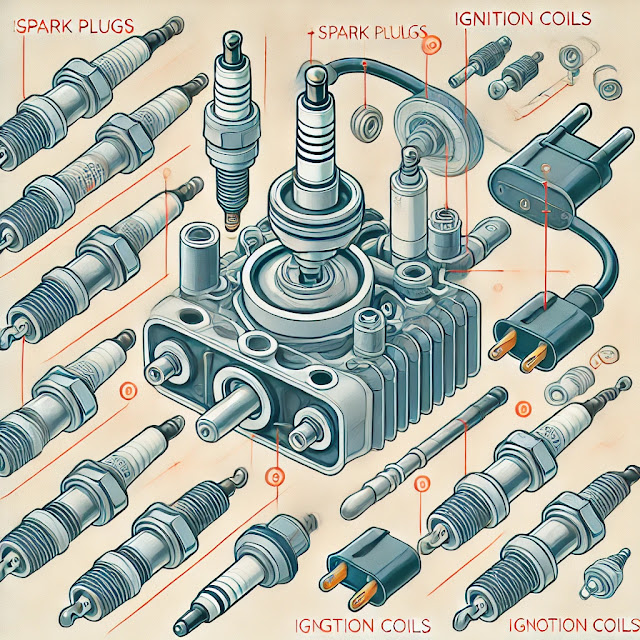An oil pressure sensor is a crucial a part of your vehicle’s engine device. It monitors oil pressure stages and signals the motive force if they drop beneath a secure variety. Without a functioning sensor, your engine may be susceptible to critical damage, which includes overheating, terrible lubrication, and even general engine failure. In this publish, we are able to discover the maximum common signs of a broken oil stress sensor and provide sensible steps on how to address those issues.
Why the Oil Pressure Sensor Matters
The oil strain sensor performs a vital function in making sure your engine runs easily. It monitors oil pressure, a crucial aspect in maintaining your engine components well-lubricated. If oil strain is too low, your engine can wear down rapidly because of expanded friction. Ignoring troubles associated with the oil strain sensor can cause engine performance degradation, improved gasoline consumption, and pricey upkeep.
10 Warning Signs of a Damaged Oil Pressure Sensor
1. Oil Pressure Warning Light:
- Description: The dashboard oil light activates or sparkles, even if the oil stages are within the suitable variety.
- Solution: Check the oil tiers and check out the oil strain sensor for any faults.
2. Flickering Oil Pressure Gauge:
- Description: The oil stress gauge behaves erratically or remains at zero in spite of right oil stages.
- Solution: Consider checking out the oil stress sensor or replacing it if important.
3. Low Oil Pressure Reading:
- Description: The gauge constantly indicates a low studying, however the oil strain is satisfactory upon manual inspection.
- Solution: Check the oil pump and pressure sensor for faults.
4. Erratic Engine Behavior:
- Description: Sudden engine stalling, negative overall performance, or inconsistent jogging conditions.
- Solution: Inspect the oil stress sensor and the oil pump to ensure both are functioning properly.
5. Check Engine Light:
- Description: The check engine mild comes on, but no different problems appear to be gift.
- Solution: Use an OBD-II scanner to check for diagnostic problem codes (DTCs) that can point to grease strain sensor troubles.
6. Burning Oil Smell:
- Description: A robust burning oil odor inside or around the engine, doubtlessly indicating engine wear because of low oil strain.
- Solution: Check the sensor and the oil tiers without delay to save you engine damage.
7. Engine Overheating:
- Description: The engine overheats due to insufficient lubrication from low oil strain.
- Solution: Check the oil stress sensor, oil waft, and the oil pump to make certain the whole thing is running as anticipated.
8. Increased Oil Consumption:
- Description: You want to feature oil more regularly than ordinary.
- Solution: Inspect for leaks or oil stress sensor malfunctions that could cause wrong readings.
9. Engine Noises:
- Description: Unusual ticking, knocking, or grinding noises from the engine due to negative oil circulate.
- Solution: Check the oil degrees, oil pump, and oil stress sensor to ensure the engine is well lubricated.
10. Unusual Oil Levels on Dipstick:
- Description: The dipstick shows fluctuating oil degrees, even though regular protection is accomplished.
- Solution: Inspect the oil filter out, oil pump, and the pressure sensor for any blockages or malfunctions.
Causes of Oil Pressure Sensor Failure
- Sensor Wear and Tear: Over time, sensors can lose accuracy or fail totally due to natural put on.
- Electrical Issues: Faulty wiring or free connections can lead to erroneous readings or sensor failure.
- Clogged Oil Filter: A grimy or clogged oil filter might also obstruct oil flow, causing incorrect readings from the sensor.
- Engine Wear: Excessive put on within the engine can purpose fluctuating oil strain, which impacts sensor performance.
What to Do if Your Oil Pressure Sensor Fails
1. Check Oil Levels and Condition: Start by way of checking the oil degree and its situation (viscosity, color, etc.).
2. Inspect or Replace the Oil Filter: A clogged oil filter out can have an effect on oil glide and sensor readings.
3. Test the Oil Pressure Sensor: Use a multimeter to check the sensor or seek advice from a professional to do it for you.
4. Replace the Sensor: If the sensor is faulty, update it as quickly as feasible to avoid engine damage.
5. Consult a Mechanic: If the difficulty persists, it's miles crucial to seek advice from a mechanic to perform a more thorough inspection.
FAQs
1. How long does an oil stress sensor remaining?
- The lifespan of an oil stress sensor varies relying on riding situations and maintenance. Typically, sensors can final everywhere from 60,000 to a hundred,000 miles.
2. Can I power with a faulty oil strain sensor?
- It’s no longer endorsed to force with a faulty sensor, as it could result in undetected low oil pressure, which could motive excessive engine damage.
3. What causes low oil pressure in an engine?
- Low oil strain can end result from numerous elements, which includes a failing oil pump, oil leaks, worn engine bearings, or a clogged oil filter.
Conclusion
To keep your engine running easily and avoid steeply-priced upkeep, it’s critical to be vigilant about your oil strain sensor. Ignoring the symptoms of a broken sensor can cause engine performance troubles, overheating, and even catastrophic failure. By often checking your oil strain gadget and addressing sensor troubles early, you may prevent tremendous damage and hold your car walking efficaciously. Don’t forget to seek advice from a expert in case you stumble upon any of the warning symptoms noted above.



.png)




.jpeg)
.jpeg)
.png)
.jpeg)
.jpeg)
.png)


.jpeg)
.jpeg)
.jpeg)


.png)
.jpeg)
.jpeg)
.jpeg)

















.jpg)


